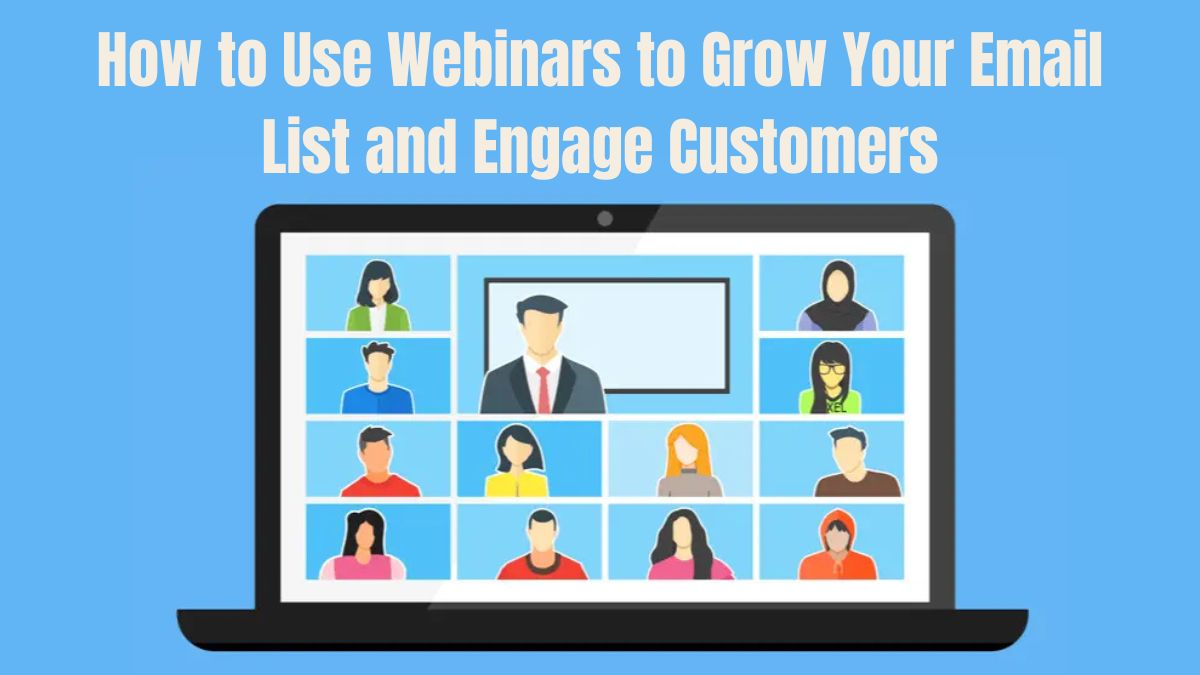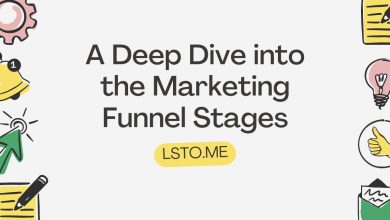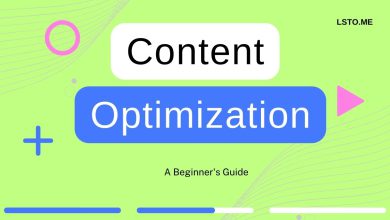
In today’s competitive digital landscape, businesses are constantly looking for innovative ways to connect with their audience, generate leads, and engage customers. Webinars, or web-based seminars, have emerged as one of the most effective tools for achieving these goals. By offering value-packed content in a live or recorded format, webinars not only build trust and authority but also serve as a powerful way to grow your email list and foster deeper engagement with your audience.
In this comprehensive guide, we’ll explore how to use webinars strategically to grow your email list, engage customers, and turn attendees into loyal advocates for your brand.
Why Webinars Are Effective for Email List Growth and Engagement
Webinars provide a unique opportunity to offer direct value to your audience while fostering a sense of community and real-time interaction. Here’s why webinars are so effective for growing your email list and customer engagement:
- Lead Generation: Webinars typically require participants to sign up with their email addresses, making it a natural and effective way to collect leads.
- Educational and Value-Driven: Attendees join webinars because they expect to learn something new or solve a problem. By delivering valuable content, you build trust and establish yourself as an authority.
- Interactive: Webinars offer a platform for real-time Q&A, polls, and discussions, which creates a highly interactive and engaging experience.
- Personalized Engagement: Webinars allow you to address your audience directly, making them feel connected to your brand on a personal level.
- Content Repurposing: Webinar content can be repurposed into blog posts, social media snippets, videos, and more, extending its value beyond the live event.
Step-by-Step Guide to Using Webinars for Email List Growth and Engagement
1. Choose a Compelling Webinar Topic
The first and most crucial step is selecting a topic that resonates with your target audience. Your topic should address a specific pain point, need, or interest that your audience has. The more relevant and timely the topic, the more likely people are to sign up and share their email addresses.
How to find a compelling topic:
- Survey Your Audience: If you have an existing email list or social media following, ask them what topics they would like to learn more about. Use polls or direct questions to gather insights.
- Analyze Industry Trends: Stay informed about the latest trends and hot topics in your industry. Offering webinars on trending subjects can help attract a larger audience.
- Use SEO Tools: Tools like Google Trends, Ahrefs, and SEMrush can help you discover popular keywords and questions people are searching for in your niche.
Example topics:
- “How to Build a Profitable Email Marketing Strategy from Scratch”
- “Top 5 Marketing Automation Tools You Need to Scale Your Business”
- “SEO for Beginners: How to Rank Your Website in 2024”
2. Set Clear Goals for Your Webinar
Before launching your webinar, it’s essential to define clear goals. Are you primarily focused on growing your email list, educating existing customers, or promoting a new product or service? Setting specific, measurable goals will help you structure the webinar content and call to action accordingly.
Common goals for webinars:
- Growing your email list by a specific number of leads
- Driving sales for a new product or service
- Increasing engagement and trust with your existing customer base
- Educating your audience on a new trend or skill
3. Promote Your Webinar to Build an Audience
Once you’ve chosen your topic and defined your goals, the next step is to promote your webinar to attract registrants. Without a strong promotional strategy, even the best webinars may struggle to generate the audience needed to meet your goals.
Promotional tactics:
- Email Marketing: Send an announcement email to your existing list and follow up with reminders leading up to the webinar.
- Social Media: Leverage platforms like Facebook, Instagram, LinkedIn, and Twitter to promote your webinar. Create engaging posts, stories, and even paid ads to reach a wider audience.
- Collaborations and Partnerships: Partner with influencers, other brands, or industry experts to co-host and promote the webinar to their audiences as well.
- Landing Page: Create a dedicated landing page that outlines the webinar’s value, benefits, and key takeaways. This page should include an easy-to-fill registration form to collect emails.
4. Create a Seamless Registration Process
The registration process is critical to collecting email addresses. It needs to be simple, user-friendly, and enticing. Ensure that you clearly communicate the value of the webinar so that attendees are motivated to provide their email information.
Key elements of a successful registration page:
- A Compelling Headline: Clearly state the benefits and value of attending the webinar.
- Short Description: Provide a concise summary of what the webinar will cover and what attendees will learn.
- Presenter Information: Include a short bio and image of the webinar presenter(s) to establish credibility.
- Call to Action (CTA): Ensure that your CTA button is visible and action-oriented (e.g., “Reserve My Spot” or “Join the Webinar”).
- Email Collection: Make sure that the form collects email addresses and any other necessary information (such as name or job title).
5. Deliver Engaging Webinar Content
When the day of the webinar arrives, it’s time to deliver the high-quality content you’ve promised. Engagement during the webinar is crucial for both keeping attendees interested and ensuring they remain engaged with your brand afterward.
Tips for engaging content:
- Interactive Features: Use polls, quizzes, and live Q&A sessions to engage attendees and keep them active participants.
- Storytelling: Incorporate storytelling into your presentation to make the content relatable and memorable.
- High-Quality Visuals: Use slides, images, videos, and other visual aids to enhance the presentation and keep it visually appealing.
- Actionable Takeaways: Ensure that your audience walks away with practical, actionable insights that they can apply immediately.
6. Post-Webinar Follow-Up
One of the biggest missed opportunities in webinar marketing is failing to follow up after the event. Follow-up emails provide a chance to continue the conversation, share additional value, and nurture leads toward a desired action.
Effective follow-up strategies:
- Send a Thank You Email: Express your gratitude to those who attended and provide a recap of the key takeaways.
- Share the Webinar Recording: Offer a replay of the webinar for those who registered but couldn’t attend or for those who want to revisit the content.
- Share Additional Resources: Include links to blog posts, whitepapers, or guides related to the webinar topic to continue providing value.
- Encourage Engagement: Ask participants to follow you on social media, visit your blog, or join your next webinar.
7. Use Webinars to Segment and Nurture Your Email List
Webinars provide a wealth of information about your audience. Based on their behavior during and after the webinar, you can segment your email list into different categories to better personalize future communications.
Segmentation strategies:
- Attendee vs. Non-attendee: Send different follow-up emails to those who attended the webinar and those who registered but didn’t attend.
- Engagement Level: Identify participants who asked questions or engaged in polls and send them more personalized or advanced content.
- Behavior-Based Content: For example, if someone downloaded additional resources after the webinar, you could send them a related ebook or offer a free consultation.
8. Convert Webinar Attendees into Customers
Finally, use webinars as an opportunity to turn leads into paying customers. While webinars are often educational in nature, they can also be a powerful sales tool when done correctly.
How to convert attendees:
- Offer an Exclusive Deal: Provide a special offer, discount, or free trial for attendees, available only to webinar participants.
- Highlight Your Product/Service: Seamlessly incorporate your product or service into the webinar as part of the solution to the problem you’re discussing.
- Include a Strong Call to Action: At the end of the webinar, include a clear and compelling CTA that encourages attendees to take the next step, whether that’s signing up for a demo, starting a free trial, or scheduling a consultation.
9. Measure Webinar Success and Optimize
Once the webinar is over, it’s time to measure its success and look for ways to improve future events.
Metrics to track:
- Number of Registrations: How many people signed up for the webinar?
- Attendance Rate: What percentage of registrants actually attended the webinar?
- Engagement Metrics: How many participants engaged through questions, polls, or chat?
- Conversion Rate: How many attendees converted into leads or customers after the webinar?
By analyzing these metrics, you can optimize future webinars to attract more leads, engage more customers, and increase your overall return on investment (ROI).
Conclusion
Webinars are a powerful tool for growing your email list and engaging your audience in a meaningful way. By offering valuable content, creating an interactive experience, and following up effectively, you can not only collect leads but also nurture relationships that turn attendees into loyal customers.
With a clear strategy in place, webinars can become an integral part of your digital marketing efforts, helping you build authority, foster engagement, and drive business growth.




